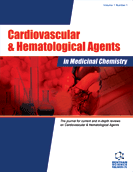Abstract
The aim of cardiac cell therapy is to restore at least in part the functionality of the diseased or injured myocardium by the use of stem/progenitor cells. Recent clinical trials have shown the safety of cardiac cell therapy and encouraging efficacy results. A surprisingly wide range of non-myogenic cell types improves ventricular function, suggesting that benefits may result in part from mechanisms that are distinct from true myocardial regeneration. While clinical trials explore cells derived from skeletal muscle and bone marrow, basic researchers are investigating sources of new cardiomyogenic cells, such as resident myocardial progenitors and embryonic stem cells. In this commentary we briefly review the evolution of cell-based cardiac repair, some progress that has been made toward this goal, and future perspectives in the regeneration of cardiac tissue.
Keywords: Cardiac cell therapy, heart failure, stem cells, cardiac regeneration, cardiac stem cells
Cardiovascular & Hematological Agents in Medicinal Chemistry
Title: New Perspectives to Repair a Broken Heart
Volume: 7 Issue: 2
Author(s): R. Gaetani, L. Barile, E. Forte, I. Chimenti, V. Ionta, A. Di Consiglio, F. Miraldi, G. Frati, E. Messina and A. Giacomello
Affiliation:
Keywords: Cardiac cell therapy, heart failure, stem cells, cardiac regeneration, cardiac stem cells
Abstract: The aim of cardiac cell therapy is to restore at least in part the functionality of the diseased or injured myocardium by the use of stem/progenitor cells. Recent clinical trials have shown the safety of cardiac cell therapy and encouraging efficacy results. A surprisingly wide range of non-myogenic cell types improves ventricular function, suggesting that benefits may result in part from mechanisms that are distinct from true myocardial regeneration. While clinical trials explore cells derived from skeletal muscle and bone marrow, basic researchers are investigating sources of new cardiomyogenic cells, such as resident myocardial progenitors and embryonic stem cells. In this commentary we briefly review the evolution of cell-based cardiac repair, some progress that has been made toward this goal, and future perspectives in the regeneration of cardiac tissue.
Export Options
About this article
Cite this article as:
Gaetani R., Barile L., Forte E., Chimenti I., Ionta V., Di Consiglio A., Miraldi F., Frati G., Messina E. and Giacomello A., New Perspectives to Repair a Broken Heart, Cardiovascular & Hematological Agents in Medicinal Chemistry 2009; 7 (2) . https://dx.doi.org/10.2174/187152509787847128
| DOI https://dx.doi.org/10.2174/187152509787847128 |
Print ISSN 1871-5257 |
| Publisher Name Bentham Science Publisher |
Online ISSN 1875-6182 |
 5
5
- Author Guidelines
- Bentham Author Support Services (BASS)
- Graphical Abstracts
- Fabricating and Stating False Information
- Research Misconduct
- Post Publication Discussions and Corrections
- Publishing Ethics and Rectitude
- Increase Visibility of Your Article
- Archiving Policies
- Peer Review Workflow
- Order Your Article Before Print
- Promote Your Article
- Manuscript Transfer Facility
- Editorial Policies
- Allegations from Whistleblowers
Related Articles
-
Current Status of Renal Arterial Endovascular Interventions
Current Hypertension Reviews Advantages and Limitations of Current Biomarker Research: From Experimental Research to Clinical Application
Current Pharmaceutical Biotechnology Label-Free Cell Phenotypic Drug Discovery
Combinatorial Chemistry & High Throughput Screening Baroreflex Function: Determinants in Healthy Subjects and Disturbances in Diabetes, Obesity and Metabolic Syndrome
Current Diabetes Reviews The Roles of Mesenchymal Stem Cells in Tissue Repair and Disease Modification
Current Stem Cell Research & Therapy (Pro)renin Receptor as a New Drug Target
Current Pharmaceutical Design Cellular and Pharmacological Targets to Induce Coronary Arteriogenesis
Current Cardiology Reviews MicroRNA in Aging: From Discovery to Biology
Current Genomics New Generation Calcium Channel Blockers in Hypertensive Treatment
Current Hypertension Reviews Micro-RNAs, Exercise and Cellular Plasticity in Humans: The Impact of Dietary Factors and Hypoxia
MicroRNA Telephone Follow-up of Older People After Hospital Admissions
Current Aging Science The Roles of the A- and B-Chains of Human Relaxin-2 and -3 on Their Biological Activity
Current Protein & Peptide Science Role of Renin-Angiotensin System in Inflammation, Immunity and Aging
Current Pharmaceutical Design Current Progresses in Metal-based Anticancer Complexes as Mammalian TrxR Inhibitors
Anti-Cancer Agents in Medicinal Chemistry Regulation of HIF-1α at the Transcriptional Level
Current Pharmaceutical Design Allopurinol Hypersensitivity Reactions: Desensitization Strategies and New Therapeutic Alternative Molecules
Inflammation & Allergy - Drug Targets (Discontinued) Neuroprotection Against Ischemic / Hypoxic Brain Damage: Blockers of Ionotropic Glutamate Receptor and Voltage Sensitive Calcium Channels
Current Drug Targets Dietary Fish Oil Reduces Colon Cancer Risk
Current Organic Chemistry Inhaled Corticosteroids in COPD: Pros and Cons
Current Drug Targets Tissue Regeneration: From Synthetic Scaffolds to Self-Organizing Morphogenesis
Current Stem Cell Research & Therapy


























